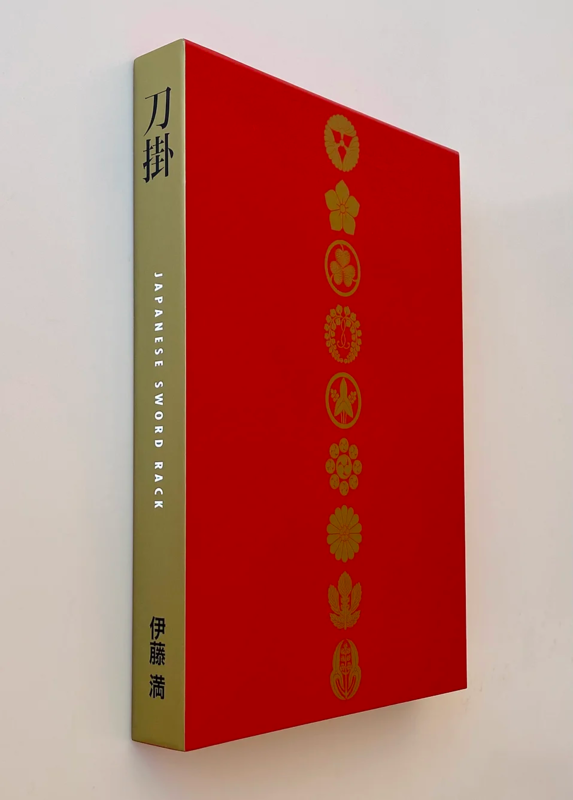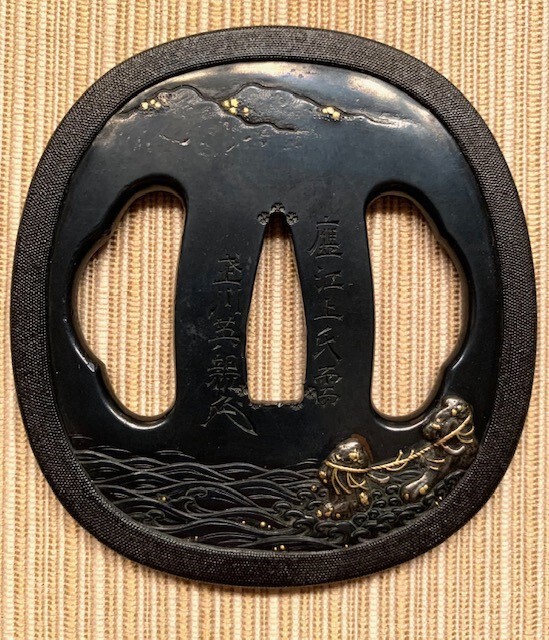
Kanenaga
Gold Tier-
Posts
267 -
Joined
-
Last visited
Everything posted by Kanenaga
-
FWIW, these signatures all look different to my non-expert eye.
-
The signature is still a bit problematic, but I must say I quite like this tsuba. It has a "presence" like some Kaneie tsuba.
-
I would ask the seller, who is well known on this board, to confirm that the dark streaks in the hamon are indeed "streaks" of oil or dirt or whatever, and not lamination openings, which if present would not necessarily disqualify the sword but might interfere with your enjoyment of it.
-
So my copy of Self & Hirose (Japanese Art Signatures) shows the kanji with the three boxes can be read "kazu". Not one that we encounter often in sword signatures.
-
I see a "crab-claw" in the last photo, so maybe a Sukesada ?
-
Good to keep in mind, though, that some artists used similar cut-outs in the nakago-ana, either for convenience or as a form of tagane-mei. 5th Jingo master
-
Wanting any info on this sword for a newbie
Kanenaga replied to Tmatth94's topic in General Nihonto Related Discussion
What Jean wrote from his deep valley. A genuine Kurihara Nobuhide sword could be worth significant money, so I wouldn't rush into anything that might damage your sword. Despite the well-intentioned opinions you will receive here, nothing is conclusive until the sword has been appraised for authenticity by an expert panel (shinsa), preferably the NBTHK in Tokyo. Proper restoration (polishing) and shinsa will require substantial investment of money and time, so I'd go slow and beware of recommended shortcuts. Check out Grey's guidelines on how to care for it, and "less is more" should be the mantra. My $0.02 -
Perhaps kanekazu ?
-
I just received a new tsuba, unboxed, but I can't fit it to any of my empty tsuba boxes because the center pillar (don't know the correct term) is too large to fit the nakago-ana. Does anyone know of a way to shrink that center support device without destroying the box? Les
-
For those interested in katanagake (sword stands/racks), the definitive (pretty much only) work is just hot off the press. https://en.galleryyouyou.com/product-page/西垣-works-of-kanshiro-nishigakiの複製 It's by Ito Mitsuru, who did the definitive books on Higo fittings, and like all his books it's full of gorgeous photos. In Japanese, but English translation is underway. And expensive, but the exchange rate now is very favorable. Les
-
Very fine work, and BTW love how you sign your mei.
-
Availability? Prices?
-
Asking on behalf of all of us who paid in advance for the full 5-volume set: May we be expecting to receive this soon? Les
-
Dale, great similars, especially that first group. Thanks so much. So I'm gathering that perhaps there is no story, just a semi-standardized way of depicting Mongolian gaijin? But such a similar image from the Hamano and Mito makers -- and now mine, which happens to be signed Toshinaga, a very big name so it's likely gimei. Nevertheless, I'll have to send it over for shinsa, on the off chance.... Any other thoughts about the origin of this image?
-
Hello All, I generally do not collect anything smaller than a tsuba, but I found this kozuka at a recent antique fair and "rescued" it from the dealer who had only the vaguest idea what it was. I need some help with the theme. It seems to show a man in fancy dress blowing a trumpet-like horn, with a small dog-like creature at his feet. Apologies for the blurry, off-color, handheld iPhone photo, but hopefully you get the idea. Can anyone identify the story or legend being referenced? All suggestions appreciated. Les
-
San Francisco sword show
Kanenaga replied to Brian's topic in Sword Shows, Events, Community News and Legislation Issues
I'll be there. -
Got it, thanks. Fabulous koshirae, wonderful images! If this is what's in your book, I want a copy.
-
Question regarding Gimei signatures & dates
Kanenaga replied to AdamH's topic in General Nihonto Related Discussion
I'm probably naive, but I find this quite remarkable -- to be able to "age" the nakago so convincingly, and recreate a Muromachi-style signature? Scary. -
Dale, What's the link or accession number for the Omori Hidetomo tsuba/set at the Walters? Can't seem to find it.
-
Censer in form of leaping carp transforming into dragon. Unknown artist. China, 1st half of 17th century, Ming Dynasty. Photo courtesy Phoenix Art Museum This and the previous quotation are Copyright Mark Schumacher, www.onmarkproductions.com/XXX/XXX.html
-
This is a great thread that Barry started. Interesting that many definitions of a shachi describe it as having the head of a tiger, yet many that we see clearly have a dragon head. There is a legend about the origin of the dragon-headed shachi, as described here: https://www.onmarkproductions.com/html/shachihoko.html a Chinese legend (Jp. = Koi-no-Takinobori 鯉の滝登り) wherein carp swim, against all odds, up a waterfall known as the “Dragon Gate” at the headwaters of China’s Yellow River. The gods are very impressed by the feat, and reward the few successful carp by turning them into powerful dragons. The story symbolizes the virtues of courage, effort, and perseverance, which correspond to the nearly impossible struggle of humans to attain Buddhahood. According to this story, the shachi represents the successful carp in the process of transforming into a dragon.
-
-
I've been told that when a young boy was presented with a sword, it would often be locked in the saya using an opening like this in the seppa-dai of the tsuba, to prevent the youngster from actually drawing the blade. Seemed to make some sense.









